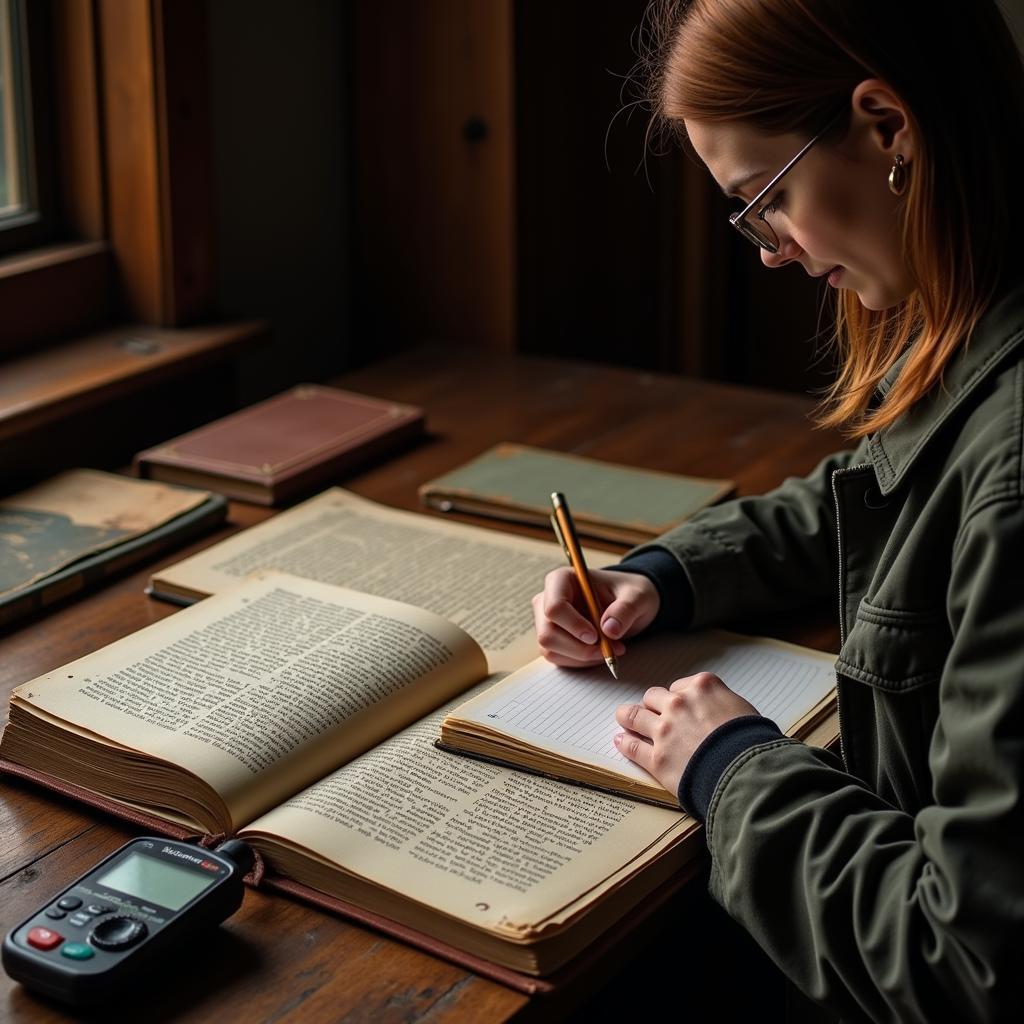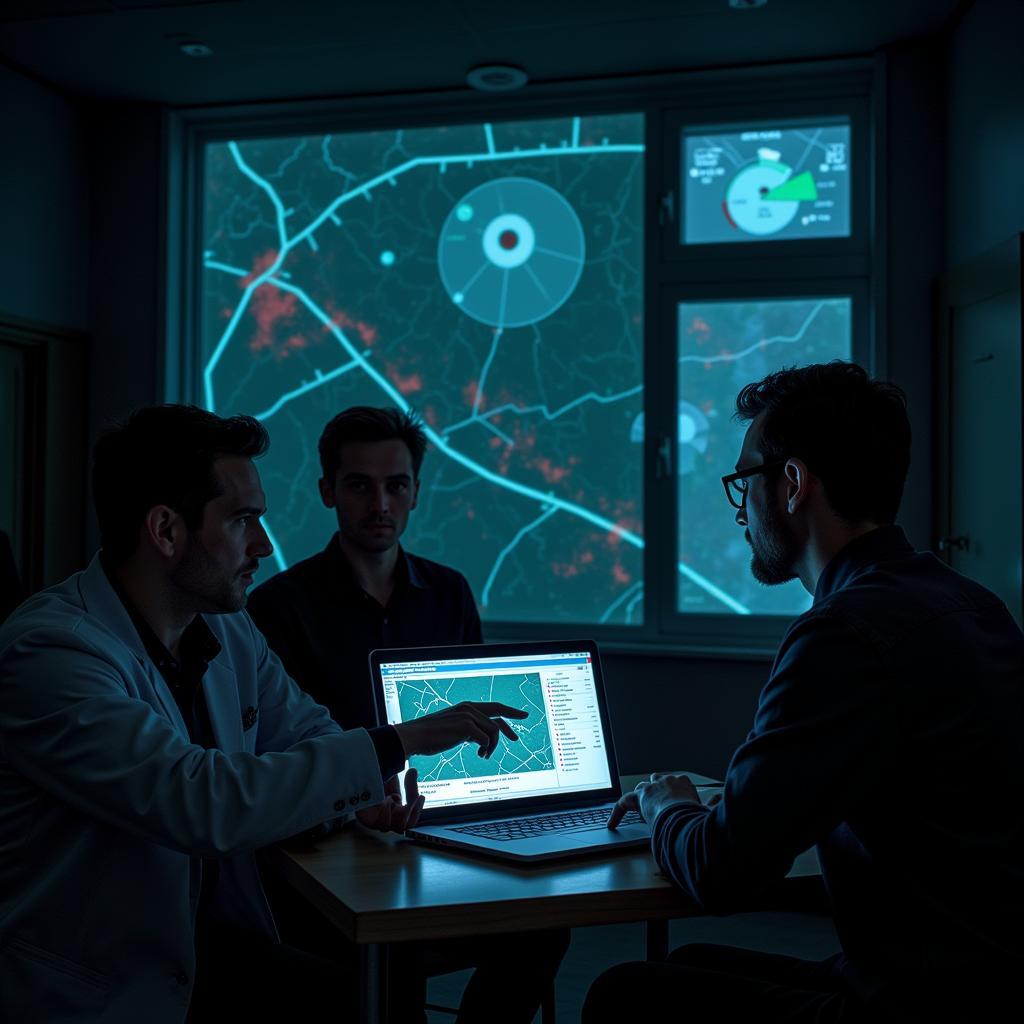The Seven Steps Of Research Process provide a systematic approach to investigating any phenomenon, from the mundane to the paranormal. This framework allows researchers to gather and analyze data effectively, leading to credible conclusions and a deeper understanding of the subject at hand. Whether you’re investigating a haunted house or exploring the mysteries of ESP, following these steps is crucial for a thorough and unbiased investigation.
Planning Your Paranormal Investigation: The First Steps
The initial stages of the seven steps of research process involve defining your research question and conducting a preliminary literature review. What exactly are you trying to find out? Are you looking for evidence of a specific entity or trying to understand a particular paranormal phenomenon? Clearly defining your research question will guide your entire investigation. Next, delve into existing research. Has anyone else investigated this location or phenomenon? What were their findings? This background research will help you understand the existing knowledge and identify potential biases or gaps in the literature.
 Paranormal Research Planning Stage
Paranormal Research Planning Stage
Gathering Data: From Observations to Interviews
Once you have a solid foundation, the next steps in the seven steps of research process involve gathering data. This might include on-site observations, collecting physical evidence, conducting interviews, and utilizing specialized equipment. If you’re investigating a haunted location, for instance, you might use EMF meters, thermal cameras, and audio recorders to collect data. Interviews with witnesses can provide valuable firsthand accounts and personal experiences. Remember to document everything meticulously, ensuring that your data is reliable and verifiable.
Analyzing the Evidence: Unveiling the Truth
The heart of the seven steps of research process lies in data analysis. This is where you sift through the collected information, looking for patterns, anomalies, and potential explanations. Are there recurring events or unusual readings on your equipment? Do witness testimonies corroborate each other? It’s essential to approach this stage with a critical and objective mindset, considering both paranormal and conventional explanations for the observed phenomena.
 Analyzing Paranormal Evidence
Analyzing Paranormal Evidence
Interpreting the Results: Drawing Conclusions
After analyzing the data, the next step in the seven steps of research process is to interpret your findings. What do the results suggest? Do they support the existence of paranormal activity, or is there a more mundane explanation? It’s crucial to be cautious and avoid jumping to conclusions. Even if the evidence points towards a paranormal explanation, it’s important to acknowledge the limitations of your research and the possibility of unknown factors.
Sharing Your Findings: Contributing to the Field
The final stage of the seven steps of research process involves sharing your findings with the wider community. This can be done through presentations, publications, or online platforms. By sharing your research, you contribute to the ongoing dialogue about the paranormal and help advance our understanding of these enigmatic phenomena.
What are the Seven Steps of Research Process?
The seven steps of research process are: 1. Identifying the research problem, 2. Reviewing the literature, 3. Formulating a hypothesis, 4. Designing the research methodology, 5. Collecting data, 6. Analyzing data, and 7. Interpreting and reporting the results.
How Can the Seven Steps of Research Process Be Applied to Paranormal Investigations?
Applying the seven steps of research process to paranormal investigations provides a structured framework for exploring unexplained phenomena. It helps researchers avoid biases and ensures a more systematic and credible approach to gathering and analyzing evidence.
Conclusion: Embracing the Unknown Through Rigorous Research
The seven steps of research process provide a vital roadmap for anyone seeking to explore the mysteries of the paranormal. By adhering to this framework, we can move beyond speculation and anecdotal evidence towards a more scientific and rigorous approach to understanding these enigmatic phenomena. Applying these seven steps of research process diligently allows us to unravel the truth, one investigation at a time.
FAQ
- What is the most important step in the research process? Defining the research question is crucial as it sets the direction for the entire investigation.
- How do I ensure the objectivity of my research? Maintain a critical mindset, consider all possible explanations, and document everything meticulously.
- What if my findings don’t support a paranormal explanation? Negative findings are still valuable. They contribute to our understanding and help refine future research.
- Where can I share my paranormal research findings? Online forums, paranormal societies, and academic journals are potential avenues for sharing your work.
- What kind of equipment is commonly used in paranormal investigations? EMF meters, thermal cameras, audio recorders, and infrared cameras are frequently used tools.
- How do I deal with skepticism about my research? Present your findings clearly and objectively, acknowledging the limitations of your study.
- Can the seven steps of research process be applied to other fields of study? Yes, this framework is applicable to any research area, providing a systematic approach to investigation.
Related Questions & Further Exploration on Paranormal Research:
- Investigating Haunted Locations: A Comprehensive Guide
- Understanding EVP: Analyzing Electronic Voice Phenomena
- The Science of Ghost Hunting: Exploring the Unexplained
Need help with your own Paranormal Research? Contact us! Phone: 0904826292, Email: research@gmail.com or visit us at No. 31, Alley 142/7, P. Phú Viên, Bồ Đề, Long Biên, Hà Nội, Việt Nam. Our team is available 24/7.